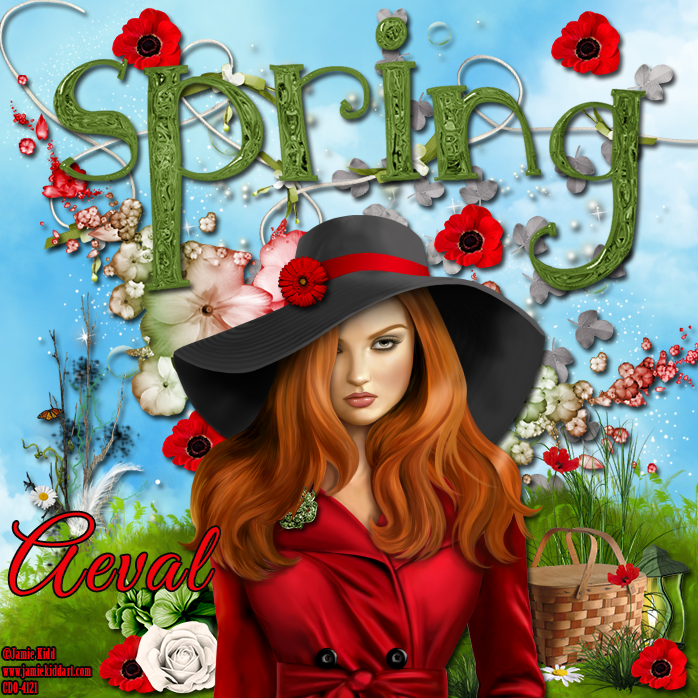**This tutorial was written using Photoshop CC. I believe the
instructions should work with various other versions, but they are not tested
on any other version. This tutorial is
my own creation. Any similarity to any
other tutorial is not done purposely or knowingly (aside from the fact that the
process is pretty similar in most tutorials).
If you do not know how to do some of the things I mention here (like
mirroring an image, adding a drop shadow, resizing elements, etc.), check out
my “Tips
and Tricks” tutorial. **
Supplies:
Kit- “Dark Spring” by Bookworm Dezines which can be purchased from PicsForDesign,
Scrap
Candy, or Inspirations
of Scraps Friends.
Tube – “Liza” by Designs by Norella available for purchase at PicsForDesign.
Abbreviations:
DS – Drop Shadow
Settings I use:
DS Settings - Blend Mode set to Multiply, Opacity set to 75%, Angle set
to 120 degrees, Distance 5, Spread 0, Size 5
Ready…..Set….Tag!
Open a new canvas (Ctrl +N) 700 x 700, transparent background. This will be referred to as the working
canvas in my directions when switching between canvases.
Add Element 39 to the canvas and
resize it to fit the center of the canvas.
Add DS.
Add your tube to the working canvas.
Resize her so she fits in the upper right corner of the canvas slightly
overlapping the frame. Add DS.
Add Element 83 to the canvas in layer behind the frame. Resize it so that it fills the center of the
frame.
To add the background I added a new layer to the bottom of the layers
and used multiple cloud brushes and various shades of blue and purple to paint
clouds against the background.
On top of the painted background I added the scattered elements from
the kit. For each one I added a layer at
the top and then a layer at the bottom diagonally. Here is the layout:
- Element 17 – Bottom left corner and duplicated to top right corner
- Element 10 – Upper left corner and duplicated to top right corner
- Element 2 – Upper middle and duplicated to lower middle
- Element 79 – Upper middle and duplicated to lower middle
Voila! The focal point of your
tag is now created.
Now decorate your tag with any of the spring themed elements from the
kit. Resize the elements as you add them
so fit the proportions of your tag.
Experiment with rotating them and mirroring them for more variety. In addition duplicate elements and use
multiple times to fill in holes and add more pizzazz. In this tutorial to indicate when I used more
than one of the same element I will add (X#) by the name to indicate how many
versions of the element I used.
Here are all the elements I used from the bottom layers up.
- Element 13
- Element 1 (x2)
- Element 84 (x2)
- Element 86
- Element 81 (x2)
- Element 61 (x2)
- Element 49
- Element 48
- Element 75
- Element 24
- Element 89
Add your license and copyright info to the tag.
Add name and any other text of choice.
Save as PNG and go share with all your friends!
Thank you for trying my tut! I’d love to see how your tags turn out so
if you like what you made, please post a copy here or show me on Facebook!




















